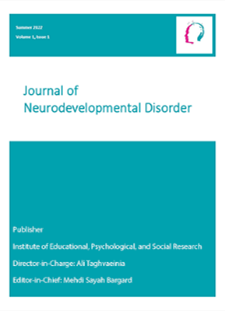Predicting the Health of Sixth-Grade Students in Tehran Based on Family-Centered Healthy Behaviors
Keywords:
Family-centered healthy behaviors, health, studentsAbstract
Purpose: This study aimed to identify family-centered healthy behaviors and examine their relationship with the mental and social health of sixth-grade students, as well as to compare these relationships between male and female students.
Methodology: This research employed a mixed-methods approach with a sequential qualitative-quantitative design. In the qualitative phase, qualitative content analysis was conducted through semi-structured interviews with health specialists to identify dimensions of family-centered healthy behaviors. In the quantitative phase, a correlational method was used, and data were collected from 310 sixth-grade students in Tehran through stratified random sampling. Research instruments included a researcher-developed questionnaire on family-centered healthy behaviors, the Beshrat Mental Health Scale (2020), and the Keyes Social Well-Being Questionnaire (2004). Data analysis was performed using stepwise regression, independent t-tests, and SPSS 23 software.
Findings: The qualitative findings identified eight dimensions of family-centered healthy behaviors: contentment, cooperation and participation, expressing affection, awareness of each other, having a spiritual program, knowledge enhancement, diligence and dynamism, and recreation and enjoyment. Correlation analysis indicated a significant positive relationship between family-centered healthy behaviors and both mental and social health, with the strongest correlation observed between recreation and enjoyment and social health. Stepwise regression analysis revealed that family-centered healthy behaviors accounted for 21% of the variance in mental health and 34.7% of the variance in social health among students. Additionally, recreation and enjoyment had the strongest predictive power for both mental and social health in both male and female students. However, female students scored significantly higher than male students in family-centered healthy behaviors.
Conclusion: Given that these behaviors significantly contribute to well-being, it is recommended that they be promoted through educational resources, training workshops, and awareness programs for parents and families to foster healthier lifestyles and prevent mental health issues in students.
Downloads
Downloads
Published
Submitted
Revised
Accepted
Issue
Section
License
Copyright (c) 2025 Masoumeh Moghimi Firozabad (Corresponding author); Elham Esmaeilabadi (Author)

This work is licensed under a Creative Commons Attribution-NonCommercial 4.0 International License.

